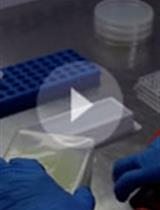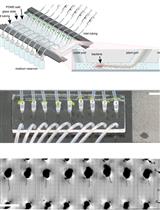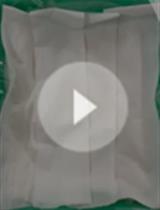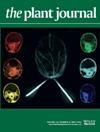- Submit a Protocol
- Receive Our Alerts
- Log in
- /
- Sign up
- My Bio Page
- Edit My Profile
- Change Password
- Log Out
- EN
- EN - English
- CN - 中文
- Protocols
- Articles and Issues
- For Authors
- About
- Become a Reviewer
- EN - English
- CN - 中文
- Home
- Protocols
- Articles and Issues
- For Authors
- About
- Become a Reviewer
Burkholderia glumae Competent Cells Preparation and Transformation
Published: Vol 3, Iss 23, Dec 5, 2013 DOI: 10.21769/BioProtoc.985 Views: 11996
Reviewed by: Tie Liu

Protocol Collections
Comprehensive collections of detailed, peer-reviewed protocols focusing on specific topics
Related protocols

Quantification of the Composition Dynamics of a Maize Root-associated Simplified Bacterial Community and Evaluation of Its Biological Control Effect
Ben Niu and Roberto Kolter
Jun 20, 2018 10379 Views

Tracking Root Interactions System (TRIS) Experiment and Quality Control
Hassan Massalha [...] Asaph Aharoni
Apr 20, 2019 7262 Views

A Quick Method for Screening Biocontrol Efficacy of Bacterial Isolates against Bacterial Wilt Pathogen Ralstonia solanacearum in Tomato
Heena Agarwal [...] Niraj Agarwala
Nov 20, 2020 5423 Views
Abstract
Bukholderia glumae is a gram-negative bacterium which causes grain rot, seedling rot and panicle blight in rice and bacterial wilt in many field crops. This bacterium has been reported from major rice growing regions around the world and is now considered as an emerging major pathogen of rice (Tsushima et al., 1996; Jeong et al., 2003; Kim et al., 2010; Ham et al., 2011). Here we describe two methods for competent cells preparation and transformation of B. glumae. Using these methods, we have applied effector detector system (Sohn et al., 2007) to B. glumae (Sharma et al., 2013).
Keywords: Burkholderia glumaeMaterials and Reagents
- Burkholderia glumae strain 106619 (National Institute of Agricultural Sciences Genebank, Tsukuba, Ibaraki, Japan)
- pEDV5 based vectors (Fabro et al., 2011; Sharma et al., 2013)
- Gentamycin
- Tryptone
- Yeast extract
- Protease peptone no. 3
- Ice
- Lysogeny Broth (LB) medium (see Recipes)
- King’s Broth (KB) agar (see Recipes)
- KB agar with 25 ng/ml gentamycin (see Recipes)
- 10% glycerol (see Recipes)
- 300 mM sucrose solution (see Recipes)
Equipment
- Deep freezer
- Autoclave
- Clean bench
- Petri plates
- Sterile 1.5 ml tubes
- Sterile 15 ml tubes
- Sterile 50 ml tubes
- Incubation Shaker
- Aluminum foil
- Spectrophotometer
- Centrifuge
- Toothpick
- MicroPulser/Gene Pulser Cuvettes, 0.2 cm gap (Bio-Rad Laboratories, catalog number: 165-2089 )
- MicroPulser/Gene Pulser Cuvettes, 0.1 cm gap (Bio-Rad Laboratories, catalog number: 165-2086 )
- Gene Pulser XcellTM Electroporation Systems (Bio-Rad Laboratories)
- Minisart filters (pore size 0.2 μm) (Sigma-Aldrich, catalog number: 16534K )
- Disposable Cell Spreaders
Procedure
Part I: Conventional method
- Preparation of competent cells
- 10 μl of glycerol stock of the B. glumae strain is inoculated to 20 ml of LB medium in a 50 ml tube and further incubated at 28 °C for 16-40 h with horizontal shaking at 200 rpm until OD600 = 0.8 is achieved.
- The lid of the tube is opened for 30 sec under a clean bench.
- The tube is incubated again at 28 °C for 4 h with horizontal shaking at 200 rpm.
- The tube is centrifuged twice at 800 x g at 4 °C for 5 min.
- Each time the pellet is dissolved in 20 ml of autoclaved cold 10% glycerol.
- The pellet is dissolved in 200 μl of cold 10% glycerol and divided into 50 μl aliquots and stored at -80 °C for a further transformation step.
- Transformation
- Remove from -80 °C tubes containing 50 μl of electro-competent B. glumae cells.
- Thaw the cells on ice.
- Add ~1 μg of pEDV5 based vector into the B. glumae cells. Incubate on ice up to 3 min.
- Transfer the mixture of cells + DNA to a cold electroporation cuvette (0.2 cm electrode gap). Make sure the suspension is at the bottom of the cuvette.
- Set the Gene Pulser apparatus at 25 μF the volt at 2.5 kV. Set the Pulse resistance controller to 200 ohms.
- Place the cold cuvette in the chamber slide (Cuvette notch facing away from you).
- Push the slide into the chamber until the cuvette is seated between the contacts in the base of the chamber.
- Electroporate by pushing the red button.
- Remove the cuvette from the chamber and immediately add 1 ml of LB medium to the cuvette and quickly resuspend the cells by pipetting.
- Transfer the cell suspension from the cuvette to 1.5 ml tubes and incubate on shaker (200 rpm) at 28 °C for 2 h to allow recovery and expression of the gentamycin resistance marker (Clean cuvettes successively with dH2O, EtOH, sterile water, then wrap with aluminum foil then autoclave).
- Pipette 200 μl of each transformation on KB agar plates containing 25 ng/ml gentamycin.
- Spread the cells with cell spreaders. Place plates inverted at 28 °C for 2-3 days in the dark.
Part II. High competency method
- Preparation of competent cells
- A frozen glycerol stock of the B. glumae strain is picked with a toothpick and spread on a KB agar plate.Place plates inverted at 28 °C for 2-3 days in the dark.
- Freshly grown B. glumae colony is inoculated to 5 ml of LB medium in a 15 ml tube and further incubated at 28 °C for 16 h with horizontal shaking at 200 rpm.
- 1 ml aliquots is centrifuged twice at 3,500 x g at 4 °C for 5 min.
- Each time the pellet is dissolved in 1 ml of filter sterilized and room temperature 300 mM sucrose solution.
- The pellet is dissolved in 200 μl of 300 mM sucrose solution and divided into 100 μl aliquots and used the cells immediately for a further transformation step.
- Transformation
- Add ~1 μg of pEDV5 based vector into the B. glumae cells.
- Transfer the mixture of cells + DNA to an electroporation cuvette (0.1 cm electrode gap). Make sure the suspension is at the bottom of the cuvette.
- Set the Gene Pulser apparatus at 25 μF the volt at 1.8 kV. Set the Pulse resistance controller to 200 ohms.
- Place the cuvette in the chamber slide (Cuvette notch facing away from you).
- Push the slide into the chamber until the cuvette is seated between the contacts in the base of the chamber.
- Electroporate by pushing the red button.
- Remove the cuvette from the chamber and immediately add 1 ml of LB medium to the cuvette and quickly resuspend the cells by pipetting.
- Transfer the cell suspension from the cuvette to 1.5 ml tubes and incubate on shaker (200 rpm) at 28 °C for 2 h to allow recovery and expression of the gentamycin resistance marker (Clean cuvettes successively with dH2O, EtOH, sterile water, then wrap with aluminum foil then autoclave).
- Pipette 200 μl of each transformation on KB agar plates containing 25 ng/ml gentamycin.
- Spread the cells with cell spreaders. Place plates inverted at 28 °C for 2-3 days in the dark.
Recipes
- LB medium
Mix 5 g of tryptone
2.5 g of yeast extract
5 g of NaCl with 800 ml dH2O
Add 0.2 ml of 5 N NaOH
Add dH2O to 1,000 ml and autoclave it for 20 min
- KB agar
Mix 20 g of protease peptone no. 3
10 g of glycerol
1.5 g of K2HPO4
1.5 g of MgSO4.7H2O with 800 ml dH2O
Adjust to pH 7.2
Add dH2O to 1,000 ml, add 15 g of agar and autoclave it for 20 min
- KB agar with 25 ng/ml gentamycin
Cool down the autoclaved KB agar to 50 °C
Add 1 ml of 25 mg/ml gentamycin
Pour in 90 mm x 15 mm Perti dish
- 10% glycerol
Mix 100 g of glycerol with 900 ml dH2O and autoclave it for 20 min
- 300 mM sucrose solution
Mix 10.27 g of sucrose with 80 ml
Add dH2O to 100 ml and filter (0.2 μm) sterilize it
Acknowledgments
This protocol was adapted from Sharma et al. (2013). This work was supported by the ‘Program for Promotion of Basic Research Activities for Innovative Biosciences (PROBRAIN)’ (Japan) and Japan Society for the Promotion of Science (JSPS) grants no. 18310136 and 20380027, and ‘The Ministry of Agriculture, Forestry, and Fisheries of Japan (Genomics for Agricultural Innovation PMI-0010)’ and the Ministry of Education, Culture, Sports, Science and Technology of Japan (Grant-in-Aid for Scientific Research on Innovative Areas 23113009); and by JSPS grant nos 22780040 and 2301518 to H. Saitoh, JSPS grant no. 2200214 to R. Terauchi. The financial assistance received from JSPS to Shailendra Sharma and Shiveta Sharma for carrying out this study is gratefully acknowledged. S. Kamoun and J.D.G. Jones were supported by The Gatsby Foundation (United Kingdom).
References
- Ham, J. H., Melanson, R. A. and Rush, M. C. (2011). Burkholderia glumae: next major pathogen of rice? Mol Plant Pathol 12(4): 329-339.
- Jeong, Y., Kim, J., Kim, S., Kang, Y., Nagamatsu, T. and Hwang, I. (2003). Toxoflavin produced by Burkholderia glumae causing rice grain rot is responsible for inducing bacterial wilt in many field crops. Plant Disease 87(8): 890-895.
- Kim, J., Kang, Y., Kim, J.G., Choi, O. and Hwang, I. (2010). Occurrence of Burlkholderia glumae on rice and field crops in Korea. Plant Pathol J 26(3): 271-272.
- Sharma, S., Sharma, S., Hirabuchi, A., Yoshida, K., Fujisaki, K., Ito, A., Uemura, A., Terauchi, R., Kamoun, S., Sohn, K. H., Jones, J. D. and Saitoh, H. (2013). Deployment of the Burkholderia glumae type III secretion system as an efficient tool for translocating pathogen effectors to monocot cells. Plant J 74(4): 701-712.
- Sohn, K. H., Lei, R., Nemri, A. and Jones, J. D. (2007). The downy mildew effector proteins ATR1 and ATR13 promote disease susceptibility in Arabidopsis thaliana. Plant Cell Online 19(12): 4077-4090.
- Tsushima, S., Naito, H. and Koitabashi, M. (1996). Population dynamics of Pseudomonas glumae, the causal agent of bacterial grain rot of rice, on leaf sheaths of rice plants in relation to disease development in the field. Ann Phytopathol Soci Japan 62(2): 108-113.
Article Information
Copyright
© 2013 The Authors; exclusive licensee Bio-protocol LLC.
How to cite
Saitoh, H. and Terauchi, R. (2013). Burkholderia glumae Competent Cells Preparation and Transformation. Bio-protocol 3(23): e985. DOI: 10.21769/BioProtoc.985.
Category
Microbiology > Microbe-host interactions > In vivo model > Plant
Plant Science > Plant immunity > Perception and signaling
Molecular Biology > DNA > Transformation
Do you have any questions about this protocol?
Post your question to gather feedback from the community. We will also invite the authors of this article to respond.
Share
Bluesky
X
Copy link









